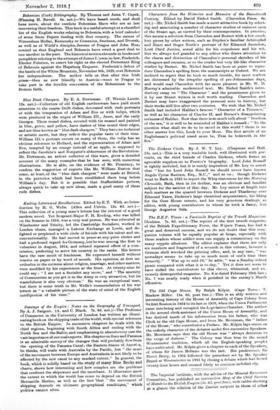net.)—Mr. Nichol Smith has made a most attractive book by
select- ,. mg and annotating a number of character studies of eminent men of the Stuart age, as viewed by their contemporaries. In practice, this means a selection from Clarendon and Burnet with a few excel- lent pieces by other writers, such as Dryden's familiar Achitophel and Zimri and Roger North's portrait of Sir Edmund Saunders, Lord Chief Justice, noted alike for his corpulence and his wit. But we always feel grateful to any editor who draws attention to the charm and distinction of Clarendon's personal sketches of his colleagues and enemies, or to the cruder but very life-like character studios by Burnet. Mr. Nichol Smith has been at pains to repro- duce Clarendon's spelling from the manuscripts at Oxford. We are inclined to regret that he took so much trouble, for most readers are distressed by the irregular spelling of pre-Johnsonian days, and would read Clarendon with far more pleasure in Mr. W. D. .Macray's admirable modernized text. Mr. Nichol Smith's intro. ductory essay on " The Character " and the prominence given to it by our Stuart writers is well worth reading. Clarendon and Burnet may have exaggerated the personal note in history, but their works still live after two centuries. We wish that Mr. Nichol Smith had included Halifax's famous " Character of a Trimmer," as well as his character of Charles II. and Burnet's disappointing estimate of Halifax. Now that there is so much talk about " freedom of the sea," it is well to be reminded of Halifax's remark : " To the question what shall we do to be saved in this world ? there is no other answer but this, Look to your Moat. The first article of an Englishman's political creed must be, That he believeth in the Sea."


































 Previous page
Previous page